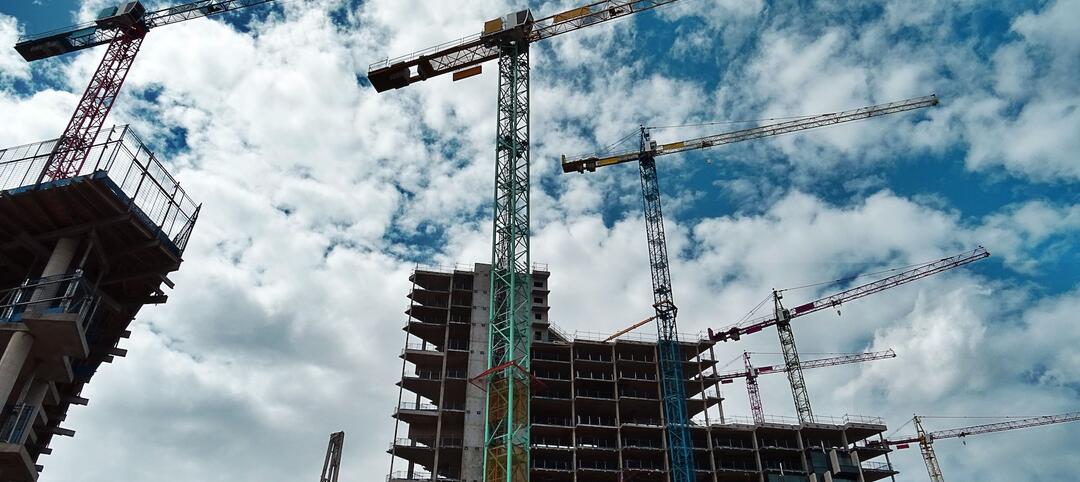Since April, Arup, the global built environment consultant, has been gathering data on an undisclosed number of buildings it has worked as a prelude to its commitment, which commenced this month, to conduct whole lifecycle carbon assessments for all of its construction and renovation projects going forward.
Those assessments will attempt to estimate a building’s carbon emissions from pre- and post construction, and encompass such variables as manufacturing, transportation, materials selection, operations, and maintenance. Arup estimates that as much as half of a building’s lifecycle CO2 emissions is attributable to embodied carbon before the building is operational.
Arup’s goal through its commitment is to confidently advise its developer-owner clients, within budgetary and quality parameters, on what products for each of a building’s systems and subsystems will produce the least amount of carbon emissions during a building’s duration. “We’re attempting to build our insights so that CO2 becomes a performance metric,” explains Erin McConahey, PE, FASHRAE, Principal and Arup Fellow. What’s been lacking—and what Arup is trying to address with its assessments—has been a critical mass of data.
ASSESSMENTS REQUIRED MORE DATA
When it announced its commitment last November, Arup stated that fewer than 1 percent of building projects was evaluated to quantify carbon emissions over their lifecycles.
Adopting whole lifecycle carbon assessments is essential to Arup’s and the building sector’s shared ambition to reduce projects’ carbon emissions 50 percent by 2030. The insights gained from conducting thousands of whole lifecycle carbon assessments each year “will help the built environment sector advance toward net zero,” stated the firm, which is developing similar methodology to extend its assessments to its infrastructure work.
Using a digital platform it devised, hundreds of project teams at Arup have been collecting carbon data on several of its 1,300 projects that met certain dollar thresholds of activity within the last fiscal year, and on whose design Arup was directly involved, says McConahey. That platform leverages materials information from measuring tools such as the Embodied Carbon in Construction Calculator (EC3), whose database allows users to compare materials for their embodied carbon impact; and Environmental Product Declarations (EPDs), through which manufacturers present objective, third-party verified data to report on the impact of their products and services.
McConahey says that, at present, manufacturers “are the only source of truth” when it comes to lifecycle carbon assessments of their own products. She adds that more contractors are asking for EPDs as part of their bidding and estimating.
DESIGNING FOR CARBON REDUCTION
The data that Arup has been assembling will allow the firm to review and adjust its design practices “using carbon rules of thumb,” says McConahey. Early next year, Arup intends to share some of its top-line insights with the industry, with an aspiration of providing a blueprint for the built environment’s path toward net zero.
Arup’s commitment is part of an ever-growing focus on environmental, social, and governance topics and reporting for construction and engineering firms. “Health, safety and labor; contracts and competitive bidding; and carbon emissions from buildings and construction form the backbone of their ESG agendas,” wrote the accounting and management consultant EY in a paper it posted last November about the state of ESG in the engineering and construction industry.
That paper found that among the 24 engineering and construction companies reviewed, leaders were making disclosures against at least 20 of 24 metrics covering ESG issues. This level of transparency is being driven by investors that evaluate ESG performance on corporate disclosures; and by Millennial workers who are three times more likely to seek employment with a company because of its stances on environmental and/or social issues.
Related Stories
Industry Research | Nov 8, 2022
U.S. metros take the lead in decarbonizing their built environments
A new JLL report evaluates the goals and actions of 18 cities.
Wood | Nov 1, 2022
A European manufacturer says its engineered wood products can store carbon for decades
Metsä Wood, a Finland-based manufacturer of engineered wood products, says its sustainable, material-efficient products can store carbon for decades, helping to combat climate change.
Energy Efficient Roofing | Oct 28, 2022
Rooftop mini turbines can pair with solar panels
A new type of wind turbine can pair well on roofs with solar panels, offering a double source of green energy generation for buildings.
Energy-Efficient Design | Oct 24, 2022
Roadmap shows how federal buildings can reach zero embodied carbon emissions by 2050
The Rocky Mountain Institute (RMI) has released a roadmap that it says charts a path for federal buildings projects to achieve zero embodied carbon emissions by 2050.
Energy-Efficient Design | Oct 14, 2022
A DOE software suite is helping SmithGroup optimize its designs’ energy efficiency
AutoBEM can run more than 200,000 energy models in an hour.
| Sep 22, 2022
Gainesville, Fla., ordinance requires Home Energy Score during rental inspections
The city of Gainesville, Florida was recently recognized by the U.S. Dept. of Energy for an adopted ordinance that requires rental housing to receive a Home Energy Score during rental inspections.
| Sep 7, 2022
Use of GBCI building performance tools rapidly expanding
More than seven billion square feet of project space is now being tracked using Green Business Certification Inc.’s (GBCI’s) Arc performance platform.
Sponsored | BD+C University Course | Aug 24, 2022
Solutions for cladding performance and supply issues
This course covers design considerations and cladding assembly choices for creating high-performance building envelopes — a crucial element in healthy, energy-efficient buildings.
| Aug 22, 2022
Less bad is no longer good enough
As we enter the next phase of our fight against climate change, I am cautiously optimistic about our sustainable future and the design industry’s ability to affect what the American Institute of Architects (AIA) calls the biggest challenge of our generation.
Daylighting | Aug 18, 2022
Lisa Heschong on 'Thermal and Visual Delight in Architecture'
Lisa Heschong, FIES, discusses her books, "Thermal Delight in Architecture" and "Visual Delight in Architecture," with BD+C's Rob Cassidy.

















